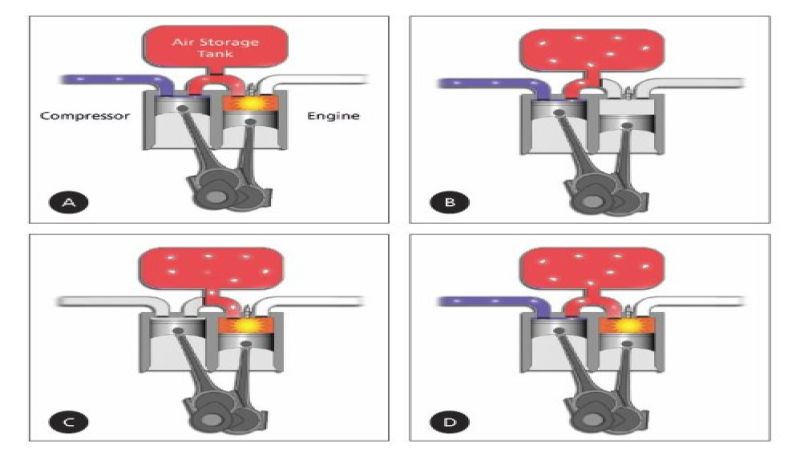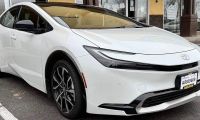Could it be that Asian interests in this new technology may allow them once again to get another efficiency jump over the the American and the European automakers?
After all, it is the Asian companies like Honda and Toyota that seem to have benefited most by adopting the Rankine cycle for their small IC engines. It will be interesting to see who around the world adopts the split-engine technology and comes out first with a high-volume production model.
According to the Scuderi Media Center, to oversee the company's day-to-day operations and guide sales and marketing efforts in the Asia Pacific region, Scuderi also announced the appointment of Deryk Langlais as Director of Asian Operations.
A graduate of the University of Massachusetts, Langlais joins Scuderi Group with more than 15 years of experience in leading business development and strategic marketing activities for a variety of successful companies in Japan.
The Japan office will operate as the Asian headquarters for the Scuderi Group, which signals that the engine development company is accelerating its efforts to meet the growing demand in the region for more advanced internal combustion engines.
The Japan office is located in Nagoya, the country's automotive hub and will serve as a regional base for the company to promote the viability of the ScuderiTM engine to address demands for improved fuel efficiency and reduced emissions.
According to the Greater Nagoya Initiative Center, the area produces 44 percent of the country's automobiles.
"The opening of our Asian office further expands Scuderi Group's global footprint, and puts us in a better position to take advantage of growing opportunities in the Asian engine markets," said Sal Scuderi, president of Scuderi Group. "Having Deryk on the team gives us better local representation to engage the growing interest in our technology."
In the Scuderi Group’s thinking, there are over 43 million internal combustion engines produced in Asia every year, with a majority of these engines produced for automotive applications where automakers continue to struggle to achieve higher fuel economy targets.
In Japan for example, the government introduced regulations in 2007 that require OEMs to improve the fuel efficiency of their new vehicles by more than 23 percent over 2004 levels by 2015 - an average of 39 MPG. These fuel economy regulations challenge Japanese automakers to achieve a gain of roughly 10 percent by 2015.
For the record, the Scuderi engine is at the forefront of fuel-efficient engine design, by applying new thermal dynamic science to the standard internal combustion engine. The Scuderi(TM) split cycle and Scuderi(TM) Air-Hybrid designs have the potential to provide significant gains in fuel economy.
Recent simulation tests on a naturally aspirated Scuderi Air-Hybrid operating in a 2004 Chevrolet Cavalier indicated that the engine consumes 36 percent less fuel. Converting to miles per gallon this equates to nearly a 50 percent gain.
About the Scuderi(TM) Engine
The Scuderi engine divides the four strokes of a combustion cycle between two paired cylinders-the left cylinder functions as an air compressor, handling intake and compression, while the right cylinder handles combustion and exhaust.
The engine requires one crankshaft revolution to complete a single combustion cycle. It’s projected to have higher torque, thermodynamic efficiency, and lower emissions than possible with today's engines.
Key to Scuderi's split-cycle design is that it fires after top dead center. By optimizing the split-cycle concept, the engine when fully developed will reduce NOx emissions up to 80 percent and improve fuel efficiency by 50 percent, compared to a conventional gasoline engine.
The company's global patent portfolio contains more than 476 patent applications filed and 154 issued in 50 countries.
-----------------------
About the Author: After 39 years in the auto industry as a design engineer, Frank Sherosky now trades stocks and writes articles, books and ebooks via authorfrank.com, but may be contacted here by email: [email protected] He is author of "Perfecting Corporate Character."
________________________________________________
Additional Reading:
Scuderi Air-Hybrid Engine technology setting up to challenge electric hybrids
EIA projects gasoline retail prices to average 3.15 per gallon in 2011
DOE funding for hydrogen technology reduced by more than 40 percent
DOE funded innovation to triple photosynthesis for hydrogen fuel
Cella Energy achievement may make hydrogen fill-up a reality
Auto industry compromise with expensive EVs fails the masses
Stop-start technology to advance more micro hybrids by 2016











